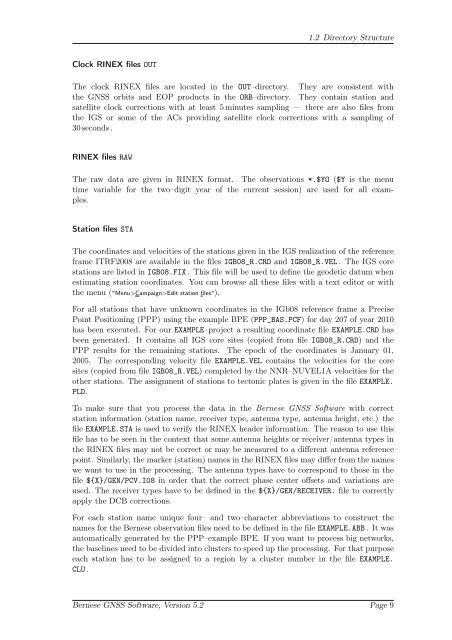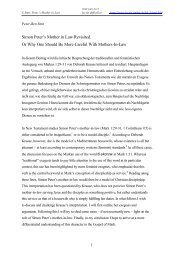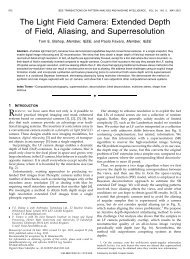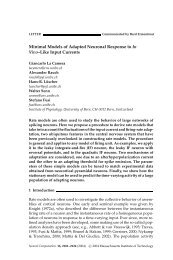Bernese GNSS Software Version 5.2 Tutorial
Bernese GNSS Software Version 5.2 Tutorial
Bernese GNSS Software Version 5.2 Tutorial
- No tags were found...
You also want an ePaper? Increase the reach of your titles
YUMPU automatically turns print PDFs into web optimized ePapers that Google loves.
1.2 Directory StructureClock RINEX files OUTThe clock RINEX files are located in the OUT–directory. They are consistent withthe <strong>GNSS</strong> orbits and EOP products in the ORB–directory. They contain station andsatellite clock corrections with at least 5 minutes sampling — there are also files fromthe IGS or some of the ACs providing satellite clock corrections with a sampling of30 seconds.RINEX files RAWThe raw data are given in RINEX format. The observations *.$YO ($Y is the menutime variable for the two–digit year of the current session) are used for all examples.Station files STAThe coordinates and velocities of the stations given in the IGS realization of the referenceframe ITRF2008 are available in the files IGB08_R.CRD and IGB08_R.VEL. The IGS corestations are listed in IGB08.FIX. This file will be used to define the geodetic datum whenestimating station coordinates. You can browse all these files with a text editor or withthe menu ("Menu>Campaign>Edit station files").For all stations that have unknown coordinates in the IGb08 reference frame a PrecisePoint Positioning (PPP) using the example BPE (PPP_BAS.PCF) for day 207 of year 2010has been executed. For our EXAMPLE–project a resulting coordinate file EXAMPLE.CRD hasbeen generated. It contains all IGS core sites (copied from file IGB08_R.CRD) and thePPP results for the remaining stations. The epoch of the coordinates is January 01,2005. The corresponding velocity file EXAMPLE.VEL contains the velocities for the coresites (copied from file IGB08_R.VEL) completed by the NNR–NUVEL1A velocities for theother stations. The assignment of stations to tectonic plates is given in the file EXAMPLE.PLD.To make sure that you process the data in the <strong>Bernese</strong> <strong>GNSS</strong> <strong>Software</strong> with correctstation information (station name, receiver type, antenna type, antenna height, etc.) thefile EXAMPLE.STA is used to verify the RINEX header information. The reason to use thisfile has to be seen in the context that some antenna heights or receiver/antenna types inthe RINEX files may not be correct or may be measured to a different antenna referencepoint. Similarly, the marker (station) names in the RINEX files may differ from the nameswe want to use in the processing. The antenna types have to correspond to those in thefile ${X}/GEN/PCV.I08 in order that the correct phase center offsets and variations areused. The receiver types have to be defined in the ${X}/GEN/RECEIVER. file to correctlyapply the DCB corrections.For each station name unique four– and two–character abbreviations to construct thenames for the <strong>Bernese</strong> observation files need to be defined in the file EXAMPLE.ABB. It wasautomatically generated by the PPP–example BPE. If you want to process big networks,the baselines need to be divided into clusters to speed up the processing. For that purposeeach station has to be assigned to a region by a cluster number in the file EXAMPLE.CLU.<strong>Bernese</strong> <strong>GNSS</strong> <strong>Software</strong>, <strong>Version</strong> <strong>5.2</strong> Page 9
















